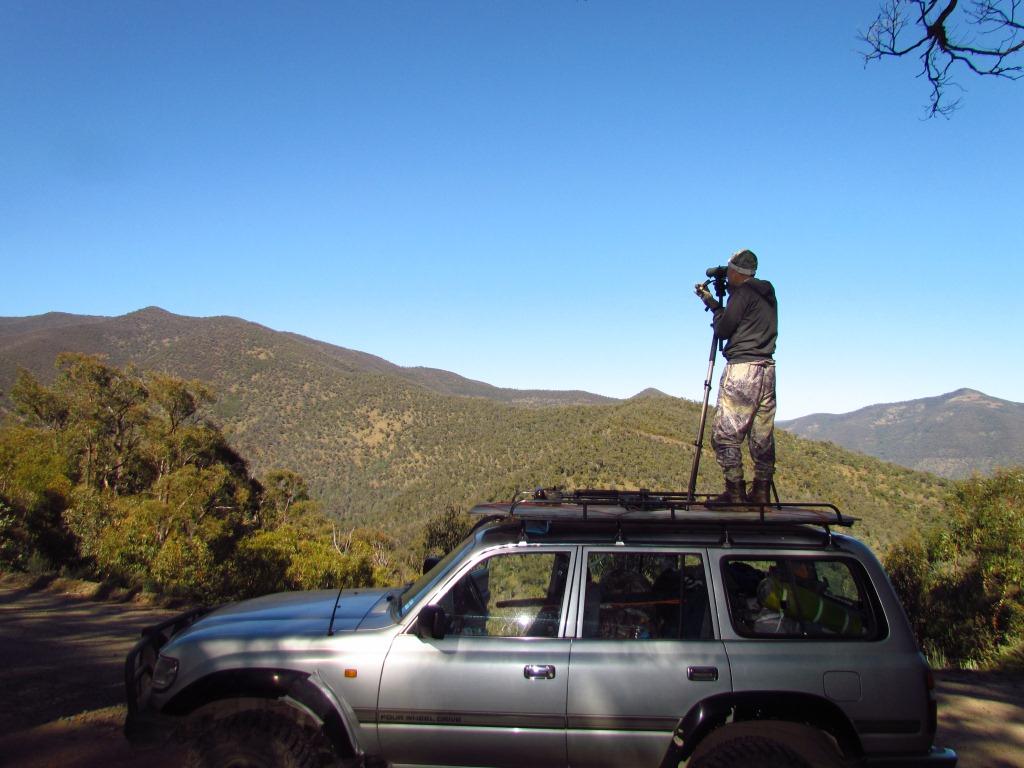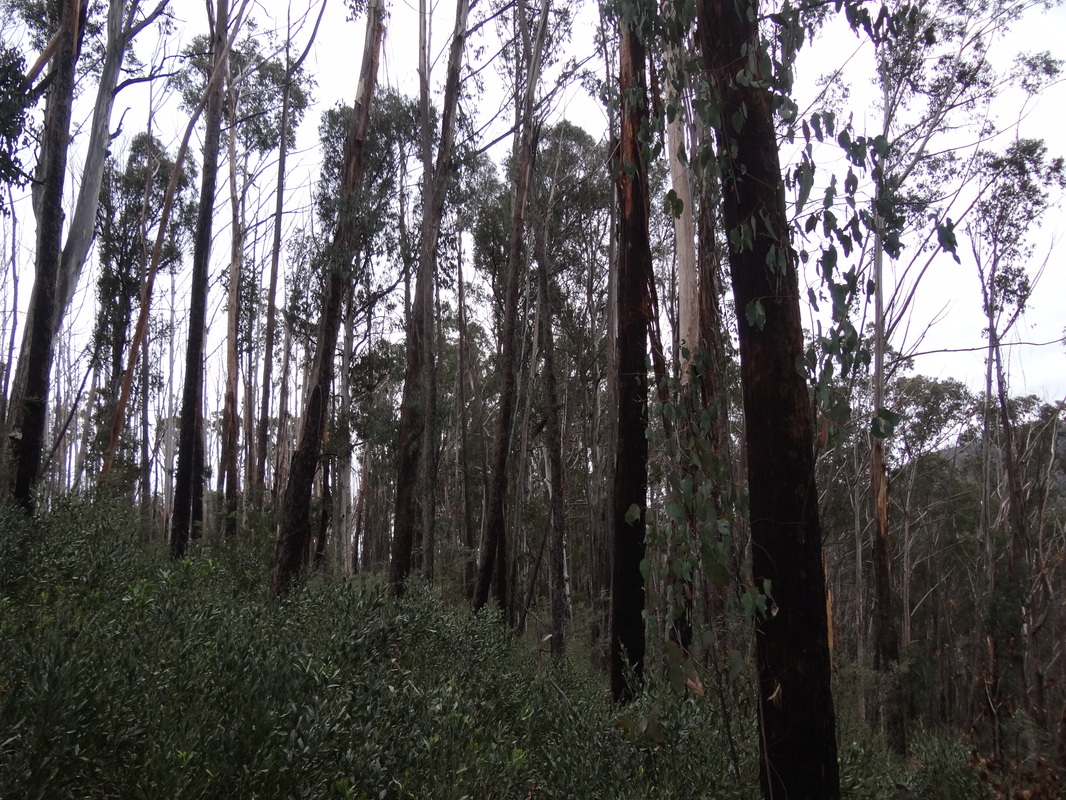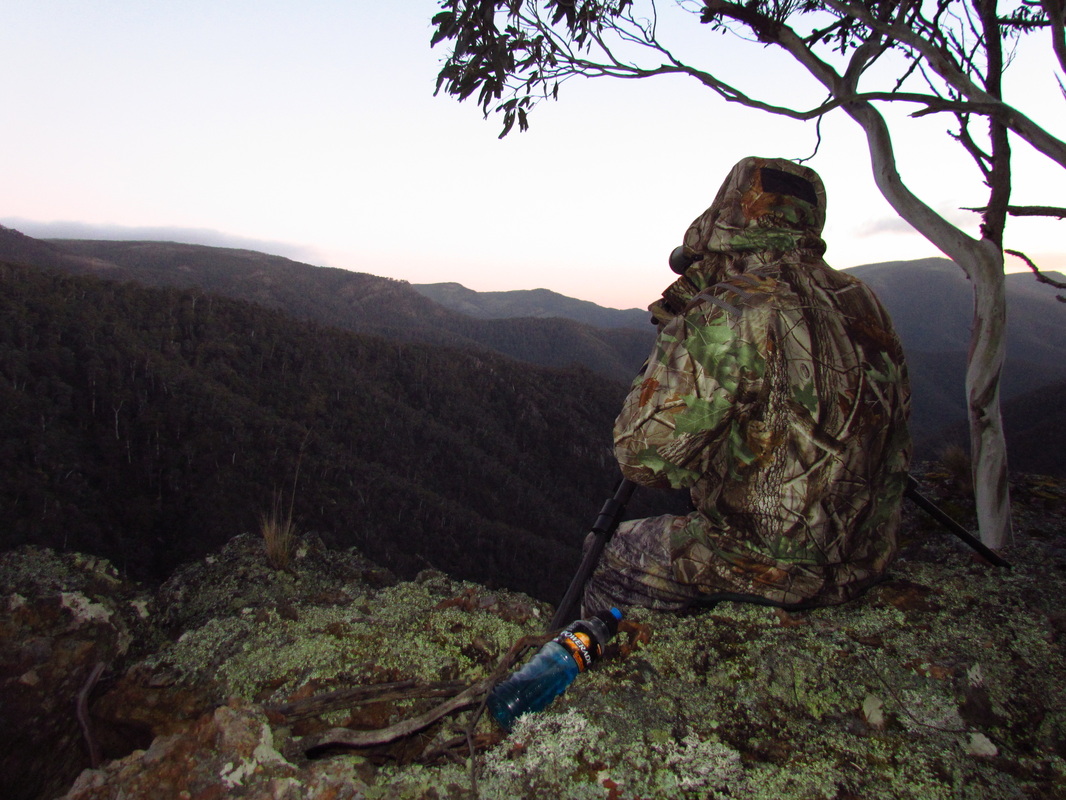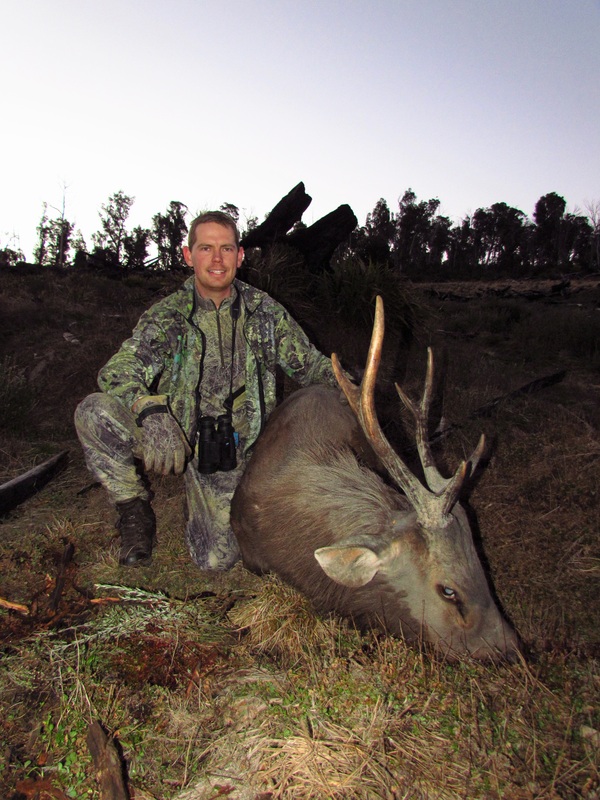This hunt began many months before driving into the Alpine National Park, northeast of Melbourne, Australia. I knew it was going to be tough both mentally and physically, in part because the terrain is steep, the weather is unpredictable, and being Sambar, the deer are elusive.
Sambar deer were introduced into Australia and healthy populations now exist throughout areas of Victoria and Southern New South Wales. I had taken Sambar on private property before but never on public land. My goal was to take a Sambar in the Alpine National Park. I had allocated a week to hunt and a day either side for travel.
Nothing prepares you for mountain hunting like hiking mountains. Unfortunately, options are very limited locally so with the pack loaded I prepared as best I could in the relatively flat country of the Hunter Valley in New South Wales. I trained morning and night building up endurance and tolerance to carrying a progressively heavier pack.
The week finally approached and early on Saturday morning I departed for Melbourne to meet up with my good mate Chris Boon. Chris has a wealth of experience hunting in the Victorian High Country and an incredible ability to locate deer.
Eleven hours of driving and I arrived at Chris’s house in Melbourne. That night we packed our bags with our supplies for a week’s hunting. Water, dehydrated meals, fuel, clothing and shelter were all neatly organised in our packs before we finally got to sleep around midnight.
We had an early start the next day so we could get into the mountains early and glass from the roads as we gained altitude. The plan was to try and determine the altitude that the deer were holding at from the roadside. If we were to spot any good stags we were ready to head straight out after them. A number of deer were spotted some distance off the road but unfortunately, no mature stags were amongst them.
As the day warmed up and the deer bedded we got the rods out of the car and managed a few small trout that we would later have for dinner. As the afternoon progressed we continued up higher into the mountains and set up a quick camp for the night.
Early next morning we departed for a good glassing location that is about a day’s walk from camp. It was a cool night and a good frost had settled in the morning. A warm drink and a quick bite to eat had us ready for the hike in. While the hike isn’t a particularly long distance, it is slow going.
Several years’ prior bushfires devastated a lot of the area. Vast stands of dead trees remain and throughout the night they can be heard thumping into the ground as they fall. With the now open canopy the wattle trees have thrived and created a dense undergrowth that is nothing short of punishing to move through. Visibility is limited to just meters, there is little to no airflow and the moisture they retain creates a rather humid environment despite the cold.
At times you are literally throwing yourself into the seemingly endless stands of wattles to make progress. Then all of a sudden you pop out into a clearing and can relax for a moment. At these points you stop, take a drink, and think “I’ve got to go back through this to get out of here”. Along the way fresh tracks, scat, rub trees and preach trees keep the excitement and anticipation high. You never know what you might bump into over the next rise.
On one particular rise, I was scanning for deer and sign, and in my state of intense focus I failed to notice that I was about to walk onto a snake – an Alpine Copper Head. This was the last thing I was expecting with the cold temperatures. Fortunately Chris had noticed it and grabbed my pack stopping me from becoming acquainted with this little critter. We grabbed a few photos as it vanished into the leaf litter.
That afternoon after an exhausting hike we arrived at a small cluster of rocks that protrudes from a steep hillside. The relief of removing your pack and taking your boots off for the day is unbelievable. The little outcrop of rocks provides for excellent glassing of the surrounding hills that were largely spared from the fires. We glassed until the light faded and we could no longer make out details on the opposing hillsides through the Swarovski 15 power binoculars.
After devouring a double serve dehydrated meal we set camp for the evening, consisting of a large fly, bivys and sleeping bags. Sleeping on the rocks isn’t particularly comfortable so a bit of extra padding in the form of wattle branches was added.
Awaking to a crisp, cold morning we had a hot drink and breakfast and began glassing at first light. Scanning through the bush looking for Sambar isn’t particularly easy. There is a lot of cover and they seem to blend into their surroundings so well. More often than not you are looking for parts of deer like ears, back lines, legs and antlers.
After 15 minutes of glassing Chris quietly announces “Got one”. He has an incredible ability to locate deer even in the thickest of cover. We both focus our attention on this area and soon one turns into two and then three – two hinds and a yearling out feeding for the morning.
After relocating slightly to obtain a different angle I located some more deer on another face. A hind, a velvet stag and a small stag in hard antler. The deer were feeding within 300 meters of each other at different elevations on an opposing face. They were feeding extremely vigorously. They fed all morning and we eventually lost sight of them at 1:00pm.
This is not typical Sambar feeding behaviour as they would have usually finished feeding early-mid morning. Perplexed by their behaviour we wrote it off due to the low pressure in this location. We later found out that our suspicions were incorrect – they knew something we didn’t.
Unbeknownst to us a large low pressure front had moved in from the south and was heading our way. The deer knew they would be sheltering from the storm that night and took the opportunity to feed throughout the day.
The wind suddenly howled up the valley and blasted our exposed location. We scrambled to secure the fly and bivys. Gale force winds and heavy rain lashed the fly that we had sheltered under. The wind sounded like a train roaring up the valley. It seemed to gather up in the valleys below and unleash all at once.
After a quick dehydrated meal we made for the bivys to try and get some sleep. Throughout the night I woke several times expecting the fly to have blown away in one of the many assaults. In the morning I was pleasantly surprised to find not only everything intact but a rather nice day. To top it off the rainfall also filled up our water supplies which meant that we didn’t have to make the 400 meter descent to the creek below.
We glassed the many faces from a number of vantage points through the day and a number of deer were spotted but no mature stags were located. This was a little disappointing as we were planning on heading back to the base camp the following morning.
The Sambar deer, despite its size, moves through this country with relative ease and apparent silence. Even in the thickest stands of wattle fresh sign can be found. I found a nice 24 inch antler in the heart of one thicket of wattles.
Most of the day was spent hiking back to camp. We finally arrived back at the base camp where we took a quick breather before unloading a few items from our packs and heading out to wait over a small clearing for the evening. We approached the clearing about 20 minutes before dusk. As we peered through the gaps in the trees a brown shape could be seen amongst some fallen trees. It was a stag out feeding.
Being only 15 minutes from camp I decided to take him. I lined up the 300wsm loaded with 180 grain Barnes bullets and sent a shot through his shoulders. He buckled at the impact and ran about 20 meters. I fired a finishing shot as he quartered away to make sure he was not going anywhere. Sambar have an amazing ability to sustain shots and run on adrenalin for substantial distances. It is imperative that you ensure that they are indeed fatally hit to avoid them escaping into thick cover where they can be very difficult to locate and recover.
We made our way down to the where he had fallen. Although this stag was not going to break any records, it was a magnificent animal and would provide a good load of venison – a welcome change to dehydrated meals. After the obligatory photographs we began to cape him out and break him down and haul the load back to camp. We hauled the last load into camp at about 10:00pm.
The next morning we had a well-deserved sleep in. We boned out the meat, packed it into eskies and headed out mid-morning for a stalk down a creek. It was an overcast day and a few showers fell as we slowly contoured about the creek. We dropped down and crossed the creek, filled up our water supplies and made for a high rocky point for some lunch. We sat high upon the rocky outcrop and refueled. The sun came out and we soaked up some warmth for a brief period before hunting our way back to camp along a tributary of the creek we had walked down that morning.
Several hours had passed and no deer were sighted. As we stalked along a game trail I was focussing on a side gully when I heard something move ahead of us. Looking up it took a moment to realise what had just happened. We had just walked head on into a stag.
There he stood just 60 meters away, both of us as stunned as the other. A split second decision to take him had me raise my rifle and fire hitting him directly in the chest – the shot felt good. He stood for a second then in one leap disappeared into a tangle of fallen logs and wattle.
We followed up the blood trail – frothy blood was found in patches as we tracked him. We followed the blood trail for about 100 meters when we lost it. Fresh prints lead downhill but they ended some 500 meters away where the stag had entered a creek. We searched until 8:00pm when it was pitch black. We headed for camp, despondent at the loss, finally arriving several hours later under the light of our headlamps.
At first light we headed back into the valley and searched until midday to try and locate the stag but overnight showers had washed away any blood sign and the fresh prints were barely recognizable. We unfortunately never did find that stag. With time running out we headed back to camp to pack our gear and make the drive back to Melbourne. Unfortunately I had to make the drive back home the following morning.
Despite the loss of the second stag it was great to accomplish what we’d set out to do. We worked hard and saw a lot of deer. That in itself is an achievement in this country and to actually take a stag really topped the trip off.
Sambar hunting is unbelievably addictive and I can’t wait to get back into the high country to pursue these ghosts again.






